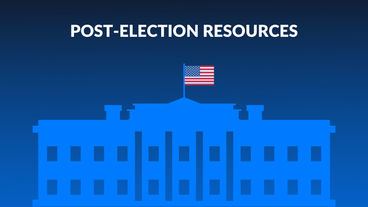
Diversity Resources to Help Educate the Workforce
Posted on 06/16/20 By Brittany K. King
Diversity and inclusion are not topics that should be taken lightly. Lorman was founded on a passion for helping professionals who value lifelong learning, no matter their race or ethnicity.
Lorman believes everyone has the right to pursue education and better themselves. Unfortunately discrimination still exists, even in spaces that are meant to be encouraging, inclusive, and safe.
Lorman strongly believes the workplace can become a better and safer space with proper education – not just in today’s climate, but as we continue to move forward towards a better future.
We compiled a list of resources and data that professionals can utilize to educate themselves and their peers on the necessity of diversity in the workplace.

Statistics on Office Discrimination
More than one million employment discrimination complaints have been filed with the U.S. Equal Employment Opportunity Commission (EEOC) between the fiscal years of 2010 and 2017. Out of the nearly 930,000 closed cases during that period, 82% of workers did not receive any form of relief from their complaint.
During the 2019 fiscal year, the EEOC received 72,675 charges of workplace discrimination. The data revealed the four most frequently filed charges against employers: retaliation, disability, race, and sex.
Discrimination in the workplace is a serious offense that could create a highly unpleasant and even dangerous working environment. Exposing employees to an unsafe workplace is a clear violation of the Occupational Safety and Health Act (OSHA) of 1970, which requires employers to provide working conditions free of known dangers. Race and color discrimination in the office will dampen company culture and could bring about legal consequences for the organization.
How do professionals define race and color discrimination?
Race discrimination is the unfavorable treatment of an employee solely based on their race or characteristics associated with race. Color discrimination is unfavorable bias based solely on an individual’s skin color complexion.
Race and color discrimination continue to be an issue, as people of color remain grossly underrepresented in corporate culture.
A study conducted by the National Opinion Research Center at the University of Chicago, titled Being Black In Corporate America: An Intersectional Exploration, reported key findings about misrepresentation in today's corporate world:
- Less than 1% of Fortune 500 CEOs are black
- Only 3.2% of executives and senior manager-level employees are black
- On average, 58% of black employees indicated they feel racism at work; the Midwest had the highest percentage (79%) and the Northeast the lowest (44%)
Organizations often lack knowledge that could help them better understand workplace biases, the effectiveness of educating employees on diversity, and how to properly enforce diversity training to employees and management.

The Importance of Diversity Training
Hiring a dedicated diversity professional or devoting Human Resources time to diversity is a good first step in eliminating workplace bias. However, diversity and inclusion in the workplace is everyone’s responsibility.
Training and learning, especially related to diversity, should not be treated as a time-consuming requirement, but rather a practice that can bring tangible change to the workplace.
So does diversity training work? In short, yes — but only if done correctly:
- Make diversity training a prolonged initiative. The longer the training lasts, the more effective it is on an organization. Lengthy training allows individuals more opportunities to encounter different groups and more time to enhance behavioral skills.
- Enact diversity-related changes outside of training. Organizations that are truly committed to change will apply learned training knowledge to everyday business. If management is committed to real advancement, employees will feel motivated to follow suit.
- Enforce mandatory diversity training. Some believe mandatory exercises are negative, but it’s crucial to push individuals out of their comfort zone to learn new behaviors. Mandatory training will make participants more aware of their cultural values and biases.
Diversity training should raise awareness about commonplace biases in the workplace, while providing necessary insight on how to change biased behavior.
Raising awareness about diversity in the workplace simply because it is a trending topic is not enough. Diversity training can help positively affect people’s beliefs and behaviors but is only successful if continuously practiced.

Resources for Promoting Diversity in the Workplace
If your organization is committed to eliminating bias in the workplace, efforts must start with educating peers and employees on diversity.
Below is a list of Lorman courses and reading material that can help educate organizations on office diversity. These resources are the first step in continuous training that will help foster a more inclusive workplace.
Programs on Diversity for HR Professionals and Employees
- Understanding Workplace Diversity
- Reducing Bias in Your Hiring Process
- How To Implement Successful Diversity Recruiting Programs
Browse our full selection of diversity-related programs.
Whitepapers on Workplace Diversity
- Put Your Money Where Your Mouth Is: Tying Executives’ Bonuses To Diversity Initiatives
- Building More Diverse Public Organizations and Businesses
- Achieve Lasting Competitive Advantage Through Diversity
See more whitepapers on diversity and inclusion.
Blogs on Accessibility, Workplace Safety, and Office Diversity
- The Importance of Workplace Diversity
- What Does it Mean to be an Accessible Company in 2020?
- Workplace Violence: Prevention and Response
- Recruiting for Diversity — 6 Business Benefits of Building a Diverse Workforce
Explore more training topics on The Lorman Blog.
Workplace Diversity Learning Path
Earn a certificate with Lorman in Workplace Diversity by completing the required courses within 90 days.Our diversity training path focuses on a core set of courses designed and developed to help provide the necessary knowledge companies and employees need to succeed.
Get started today with the Workplace Diversity Learning Path.

If you have experienced discrimination in the workplace, you can file charges with the Equal Employment Opportunity Commission.
If you have questions about Lorman, or would like to suggest a topic to add to our extensive library of resources, please feel free to contact us.
Related Articles
Social Media Day was launched in 2010 to recognize and celebrate social media’s impact on global communication. But why should #SMDay matter to business leaders and human resources professionals?
Stay Ahead of the Change: 8 Courses to Help You Navigate Today’s Political Landscape
The 2020 general election was historic and as Inauguration Day approaches, Americans are anticipating changes and reform in nearly all sectors. These courses will help you stay on top of these expected post-election changes.
As remote work continues to be the norm, some may never return to the office. So why are companies ditching the office and opting for a remote workforce? These are 7 incredible benefits to remote working.


